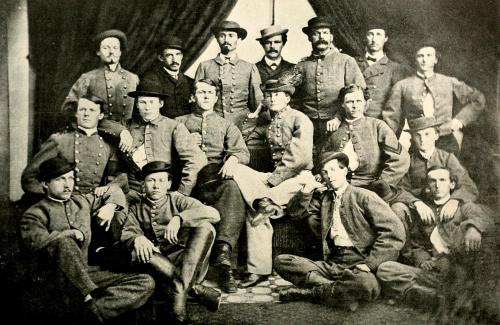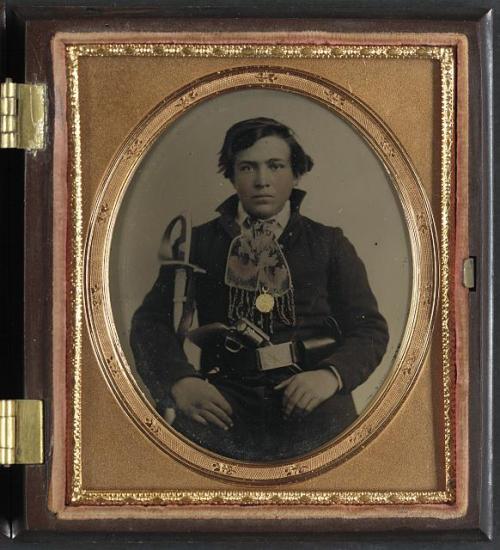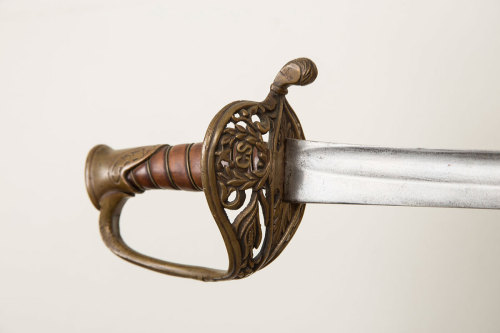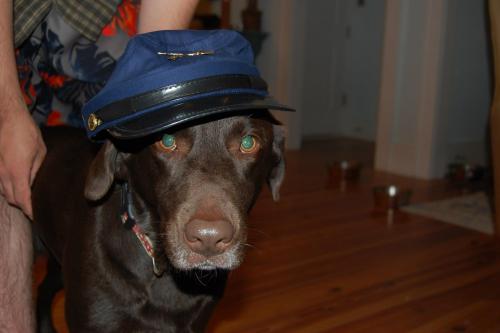#american civil war

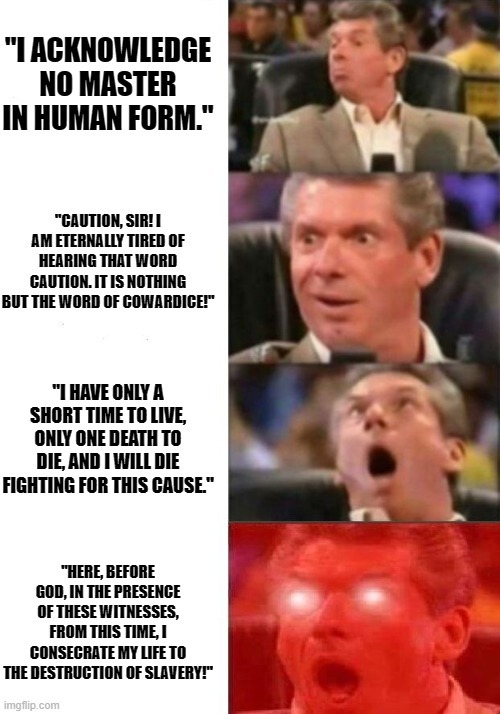






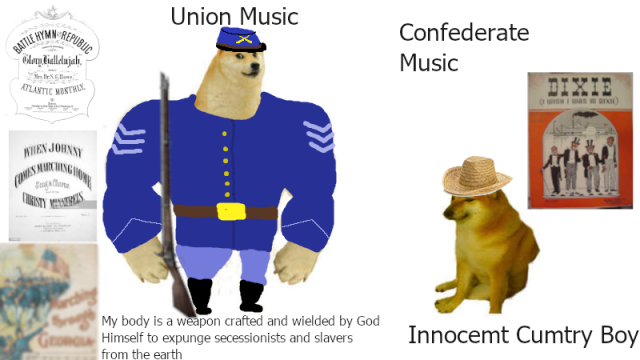
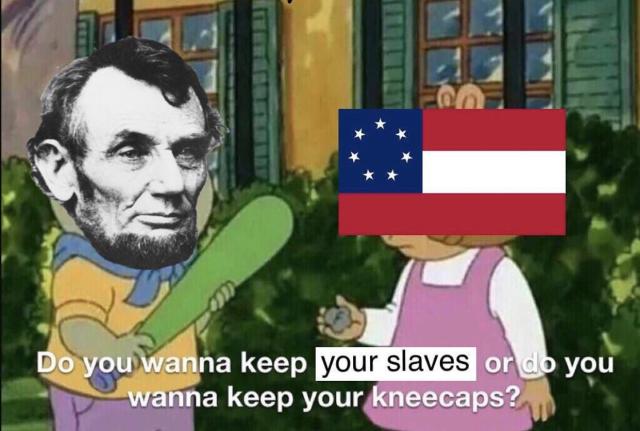
I discovered r/ShermanPosting (a subreddit dedicated to American Civil War and utterly bashing on the Confederacy) and while all the memes are great I am livingfor these abolitionist memes
Btw, the guy with the awesome beard is John Brown, a staunch abolitionist and one of the most based Americans to have ever lived. I highly recommend reading up on him if you’ve never heard about him. His attempt to start a slave revolt, while unsuccessful and got him hanged for treason, was a huge motivating event for the Civil War.
Confederate Infantry within Jackson’s command photographed in Frederick, Maryland during the Antietam or Maryland Campaign.
12th September, 1862.
The photograph is the property of the Historical Society of Frederick County, Maryland.
Post link
Men of the 43rd Battalion, 1st Virginia Cavalry AKA Mosby’s Rangers
Colonel John Singleton Mosby is sat on the second row, third from the right.
Post link
Colonel John Singleton Mosby of the Confederate Army and Commanding Officer of the 43rd Battalion, 1st Virginia Cavalry or “Mosby’s Rangers”.
Mosby apparently said of this photograph, that it was his favourite according to http://www.findagrave.com/cgi-bin/fg.cgi?page=pv&GRid=3080&PIpi=18908470
But I cannot confirm this.
Post link
Union veterans of the American Civil War from Rhode Island gathered at Devil’s Den, Gettysburg, Pennsylvania.
Gettysburg.com
Post link
A tin type of cavalry Trooper Thomas Moody of the 11th Missouri State Militia Cavalry.
The Missouri State Militia have an interesting story as Missouri had divided loyalties during the war but despite this the State Militia fought both Confederate guerrillas and the Confederate Army and helped to keep Missouri in the hands of the Union.
Post link
A Confederate Army Staff Officers Sword manufactured by Boyle & Gamble of Richmond, Virginia.
Included too is that crimson sash worn by the officer.
The guard of the sword bears the C.S. marking the sword as that of a Field or Staff officer and the star represents the Confederacy. The laurel symbolizes the bravery of the Confederate soldier and the corn is there to represent the agricultural base of the Confederacy.
Sold by Gary Hendershott:-
http://www.garyhendershott.net/online-catalogs/civil-war-catalog
Post link
Nick (who before this has been known as boyfriend and from here on out will be blessed with his God given name) and I visited Gettysburg this past Memorial Day weekend (predictably I was on the verge of tears the entire time). After a long day of trudging through the battlefield, we made a pit stop at the Soldiers National Cemetery.
For those of you who haven’t been to Gettysburg (not that I’ve been there a lot; I’ve been once), people there seem pretty devoted to the whole dressing up in period clothing thing. Like to an intense degree. We basically couldn’t go anywhere without seeing someone dressed up. (It was excellent.) The cemetery was no different. When we first got there and walked through the gates towards the monument to Abe Lincoln, I immediately spotted a whole group of reenactors. We followed them, because there was a guy dressed in a top hat who looked suspiciously from the back like Lincoln and I was praying for a reading of the Gettysburg Address.

It ends up they were having a Memorial Day service. Nick wasn’t too into it, but it had been a long day for someone who doesn’t find the Civil War nearly as interesting as I do, so we only stuck around for a little bit. The guy with the banjo quietly plucked “Hard Times” while the women milled around, waiting for the service to begin. I stared up at the Soldiers Memorial, my feet weighted down to the ground that Abraham Lincoln had yet to tread 150 years ago, because the battle hadn’t been fought. They wouldn’t be there until July and Lincoln until November, but still he had walked this path once when the brave men who fought were barely in their graves. One hundred and fifty years ago these men were still alive. Lincoln was still alive. And here I was, seven score and ten years later, standing on that spot.
What a way to spend Memorial Day.

“Oh, Honest Abe, which piece of memorabilia should I buy from your gift store?”
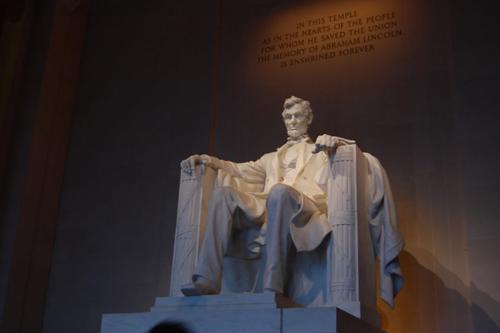
“The marble bust. It’ll look sweet on your dresser.”

“You are so wise, Abraham Lincoln. So, so wise.”
My uncle moved to Charleston five or six years ago and since then, my family has been vacationing there. We’ve gone at least once a year, twice if we’ve been lucky. I love it there for a lot of reasons, especially because of all the history. It’s a good place for a Civil War buff like me to roam and easy to drag normal people along with me, what with it being so beautiful and all that.
(This post is a bit lame, because I don’t want to go into much detail, since a lot of the cool Civil War stuff are their own items on the List. I guess in the meantime, check out the tourism website for Charleston and daydream away about General Lee’s ghost standing on the balcony of The Mills House hotel…)

Boyfriend and I have plans to move to Charleston one day when we have a bit more money. He told me we could move to Rhett Butler Drive (outside of Charleston proper in the neighboring town of Ashley), but only if every time he leaves the house he’s allowed to say, “frankly my dear, I don’t give a damn,” which I think is a pretty good trade off.
The Civil War Trust has been in the ongoing process of compiling a to-do list for the 150th anniversary. It’s overwhelmingly massive already, but apparently there will be 1400 items on it by the end of the sesquicentennial (one for each day!). There’s a print out version, which is still frighteningly long, but at 400 items it seems a bit more manageable. I’m not sure how they separated these 400 from the leftover 1000, but I imagine there might have been some logic to it. Maybe.
Anyway, the best thing about the printable version is that it’s actually a checklist! Meaning, crazy people like me can use it to keep score of their 150th experiences. It’s very useful.
In an effort to be more organized and also to seem like an interesting, normal person who doesn’t just sit in her bedroom with her Lee and Grant finger puppets and cry over books about Lincoln, I’ve decided I might start blogging about my efforts to tackle the Essential To-Do List. You know, to prove to you all that I do go outside, even if outside consists of staring at pieces of land where soldiers once fought.
It’ll be fun?
Four score and seven years ago our fathers brought forth on this continent, a new nation, conceived in Liberty, and dedicated to the proposition that all men are created equal.
Now we are engaged in a great civil war, testing whether that nation, or any nation so conceived and so dedicated, can long endure. We are met on a great battle-field of that war. We have come to dedicate a portion of that field, as a final resting place for those who here gave their lives that that nation might live. It is altogether fitting and proper that we should do this.
But, in a larger sense, we can not dedicate – we can not consecrate – we can not hallow – this ground. The brave men, living and dead, who struggled here, have consecrated it, far above our poor power to add or detract. The world will little note, nor long remember what we say here, but it can never forget what they did here. It is for us the living, rather, to be dedicated here to the unfinished work which they who fought here have thus far so nobly advanced. It is rather for us to be here dedicated to the great task remaining before us – that from these honored dead we take increased devotion to that cause for which they gave the last full measure of devotion – that we here highly resolve that these dead shall not have died in vain – that this nation, under God, shall have a new birth of freedom – and that government of the people, by the people, for the people, shall not perish from the earth.
Post link
Boyfriend and I made plans for Memorial Day weekend. We’re going to Gettysburg. I got so excited looking at the tourism website I felt like throwing up.

Been busy and doing anime art but I’m always in a history mood in the summer
General Pierce M.B. Young(Confederate)
Here we have a distinguished gentleman indeed. Reclining in his chair, Young is wearing the fine civilian clothes he donned for his post-war career as a politician and diplomat, although this photo was apparently taken at the height of the war itself, in 1863. His face demonstrates an unusual take on a goatee, with his remarkable moustache almost blocking out what little beard he has on his chin.
Young was one of the leading Confederate cavalry figures of the war, more or less from start to finish. He served under Wade Hampton and J.E.B. Stuart, showing bravery and leadership skills in a series of battles that eventually won him promotion to major general late in 1864. He saw out the war desperately and vainly defending his home state of Georgia and then his birthplace of South Carolina. After the surrender he returned to Georgia and served four terms in the US House of Representatives, later becoming a consul in Russia and Central America.
Post link
General Fitz John Porter(Union)
Hat in his right hand and sword at his left, Porter looks like the smart and distinguished general he was during the early stages of the war. But events in the summer of 1862 would lead to a controversial court martial and the effective end of his military career.
A professional soldier and veteran of the Mexican-American War, Porter was appointed to a senior command within George McClellan’s Army of the Potomac. He developed a good reputation, which was shattered when he took the blame for the fiasco at the Second Battle of Bull Run. Porter refused an order from John Pope to mount an attack on Stonewall Jackson’s Confederates, because he feared exposing his men to a rebel force under James Longstreet which had just arrived on the battlefield. A day later, Porter reluctantly agreed to the attack, and his men were duly routed along with the rest of the Union Army. Once his friend McClellan was relieved of command later in the year, Porter no longer had any political cover, and was soon arrested, tried and convicted for his initial refusal to follow orders. He spent much of the rest of his life seeking to clear his name, and his sentence was eventually commuted in 1886.
Post link
General Quincy Gillmore(Union)
With his bushy black beard and his sword at his left hand, Gillmore looks every bit the classic Civil War-era general. In reality, he wasn’t a classic soldier-general at all, but one of the innovative military engineers who helped the Union win the war.
Gillmore’s most notable achievement came at Fort Pulaski near Savannah in 1862. He used the new generation of rifled naval artillery to lay waste to the fort’s stone walls, essentially rendering old-style brick fortifications obsolete overnight. His record in more conventional warfare was less notable, and he was in charge for the ill-advised assaults on Fort Wagner off Charleston in July 1863, battles memorable for both the involvement of African-American soldiers and the high number of Union casualties. After the war, Gillmore had a long career as a civil engineer, including rebuilding and updating some of the Atlantic defences he had himself helped to destroy.
Post link



